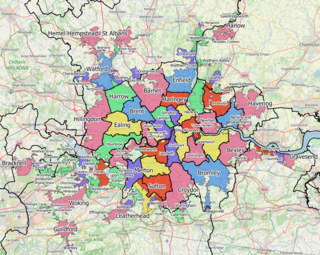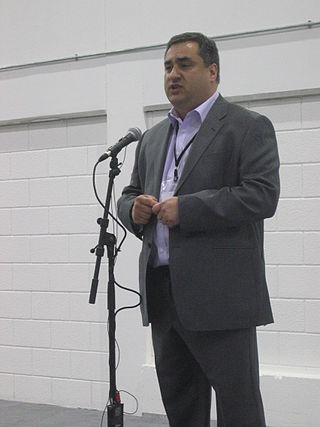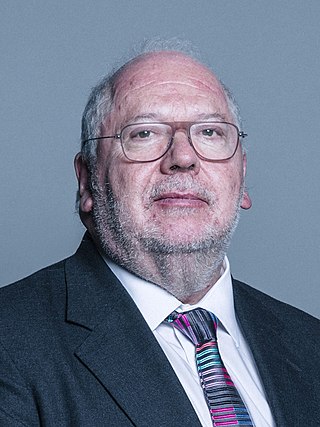Related Research Articles

The region of Greater London, including the City of London, is divided into 73 parliamentary constituencies which are sub-classified as borough constituencies, affecting the type of electoral officer and level of expenses permitted.
The following people served as members of the Greater London Council, either as councillors or Aldermen. The polling days were:

The London Government Act 1963 is an act of the Parliament of the United Kingdom, which created Greater London and a new local government structure within it. The Act significantly reduced the number of local government districts in the area, resulting in local authorities responsible for larger areas and populations. The upper tier of local government was reformed to cover the whole of the Greater London area and with a more strategic role; and the split of functions between upper and lower tiers was recast. The Act classified the boroughs into inner and outer London groups. The City of London and its corporation were essentially unreformed by the legislation. Subsequent amendments to the Act have significantly amended the upper tier arrangements, with the Greater London Council abolished in 1986, and the Greater London Authority introduced in 2000. As of 2016, the London boroughs are more or less identical to those created in 1965, although with some enhanced powers over services such as waste management and education.

The Greater London Built-up Area, or Greater London Urban Area, is a conurbation in south-east England that constitutes the continuous urban sprawl of London, and includes surrounding adjacent urban towns as defined by the Office for National Statistics. It is the largest urban area in the United Kingdom with a population of 9,787,426 in 2011.

Local government elections took place in London, and some other parts of the United Kingdom on Thursday 4 May 2006. Polling stations were open between 7am and 10pm.

Greater London Association of Trade Union Councils (GLATUC) is the largest County Association of Trades (Union) Councils in the Uk and covers the Greater London area. As the official Trades Union Congress body for London GLATUC seeks to co-ordinate activity by Trades (Union) Councils across the capital and works with individual unions and other organisations on a range of campaigns and activities. It is part of the national Trades Union Congress.

Local government elections took place in London, and some other parts of the United Kingdom on Thursday 6 May 2010. Polling stations were open between 7am and 10pm.

There were local government elections in London on Thursday 22 May 2014. All councillor seats on the 32 London borough councils were up for election. The electorates of Hackney, Lewisham, Newham and Tower Hamlets also elected their executive mayors, who operate in place of council leaders in those boroughs. Ward changes took place in Hackney, Kensington and Chelsea, and Tower Hamlets, which reduced the total number of councillors by 10 to 1,851. Both the mayoral and councillor elections are four-yearly.

Local government elections took place in London, and some other parts of the United Kingdom on Thursday 2 May 2002. Ward changes took place in every borough, following a series of reviews and 32 statutory instruments which reduced the total number of councillors by 56 from 1,917 to 1,861.

The 2018 London local elections took place in London on 3 May 2018 as part of wider local elections in England. All London borough councillor seats were up for election. Elections to the Corporation of London were held in 2017. Mayoral contests were also held in Hackney, Lewisham, Newham and Tower Hamlets. The previous London borough elections were in 2014.

The 2022 London local elections took place on 5 May 2022, as part of the 2022 United Kingdom local elections. All London borough councillor seats were up for election. Mayoral elections took place in Hackney, Lewisham, Newham and Tower Hamlets, with Croydon electing a mayor for the first time following a local referendum in October 2021.
Newham North East was an electoral division for the purposes of elections to the Greater London Council. The constituency elected one councillor for a four-year term in 1973, 1977 and 1981, with the final term extended for an extra year ahead of the abolition of the Greater London Council.
Hackney was an electoral division for the purposes of elections to the Greater London Council. The constituency elected three councillors for a three-year term in 1964, 1967 and 1970.
Newham was an electoral division for the purposes of elections to the Greater London Council. The constituency elected three councillors for a three-year term in 1964, 1967 and 1970.
Croydon was an electoral division for the purposes of elections to the Greater London Council. The constituency elected four councillors for a three-year term in 1964, 1967 and 1970.
References
- ↑ "General Election of Greater London Councillors" (PDF). 9 April 1964. Archived from the original (PDF) on 22 August 2013. Retrieved 17 September 2023.
- ↑ "General Election of Greater London Councillors" (PDF). 13 April 1967. Archived from the original (PDF) on 22 August 2013. Retrieved 17 September 2023.
- ↑ "Greater London Council Election" (PDF). 9 April 1970. Archived from the original (PDF) on 22 August 2013. Retrieved 17 September 2023.
- ↑ "Greater London Council Election" (PDF). 12 April 1973. Archived from the original (PDF) on 22 August 2013. Retrieved 17 September 2023.
- ↑ "Greater London Council Election" (PDF). 5 May 1977. Archived from the original (PDF) on 22 August 2013. Retrieved 17 September 2023.
- ↑ "Greater London Council Election" (PDF). 7 May 1981. Archived from the original (PDF) on 22 August 2013. Retrieved 17 September 2023.
- ↑ "The Greater London (Electoral Areas) Order 1972" (PDF). legislation.gov.uk. 20 June 1972. Retrieved 22 November 2023.
- ↑ "The Parliamentary Constituencies (England) Order 1970" (PDF). legislation.gov.uk. 11 November 1970. Retrieved 22 November 2023.